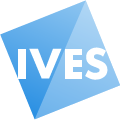
The following use cases demonstrate how IVES can be used by different stakeholders: venue managers, promoters, data publishers or listings services, and researchers.
IVES allows you to communicate your event listings in a single unambiguous XML data format.
A single IVES document can be sent to several IVES-compliant events listing services. This removes the need to create bespoke data feeds for each service you supply.
To create an IVES document you will need to know your Venue ID.
IVES is designed to allow interoperability between different data systems related to arts and entertainment events. If you are a festival organiser, tourist board, or other events promoter you can use IVES to create events listings that can be used not only on your own website but will be propagated through many different online listings services with the minimum of effort.
You can also ask that participating venues or events organisers submit the events to your programme in the IVES format, reducing your workload and improving dissemination.
IVES is defined using an XML schema making it relatively straightforward to extract structured data for display on websites or publications. The XML schema defines a single format for sending and receiving data about events. The Venue ID reduces the probability of duplicate venues existing in the data.
IVES is designed to allow interoperability between different data systems related to arts and entertainment events. By adopting the IVES format for all your data you will be able to freely exchange data with other IVES users including individuals as well as other listings services.
IVES is defined using an XML schema so extracting data for display on websites or publications is simple. It is also a relatively simple matter to develop tools based on your data set (for example a dynamic events calendar) which fit your particular needs as a data publisher.
The IVES standard is designed to allow interoperability between different data systems related to arts and entertainment events. Until now, events listings have used different formats and specific transformations are required to allow communication or data-matching between two datasets. By standardising the exchange format, entities will be able to communicate with each other without the need for writing transformation software. It will therefore be possible to aggregate vast numbers of different events with minimum effort and to produce larger datasets with more events information than has been possible before.
Data in IVES format can be analysed using the element set provided. Data is robustly structured and, if stored in a database, will allow researchers to pull out particular queries from all the data held. Examples might include "All the performances of Hamlet in the UK in the last month" or "Compare the numbers of events happening on Tuesday and Saturday nights".
The IVES standard will facilitate the aggregation and archiving of all events data in curated databases without the need for complex cross-searching of metadata. It is not limited to current events and the standard is flexible enough to allow archives of past events to be created for research purposes. Clearly, tools built on IVES would allow cross-searching between all compliant archives.